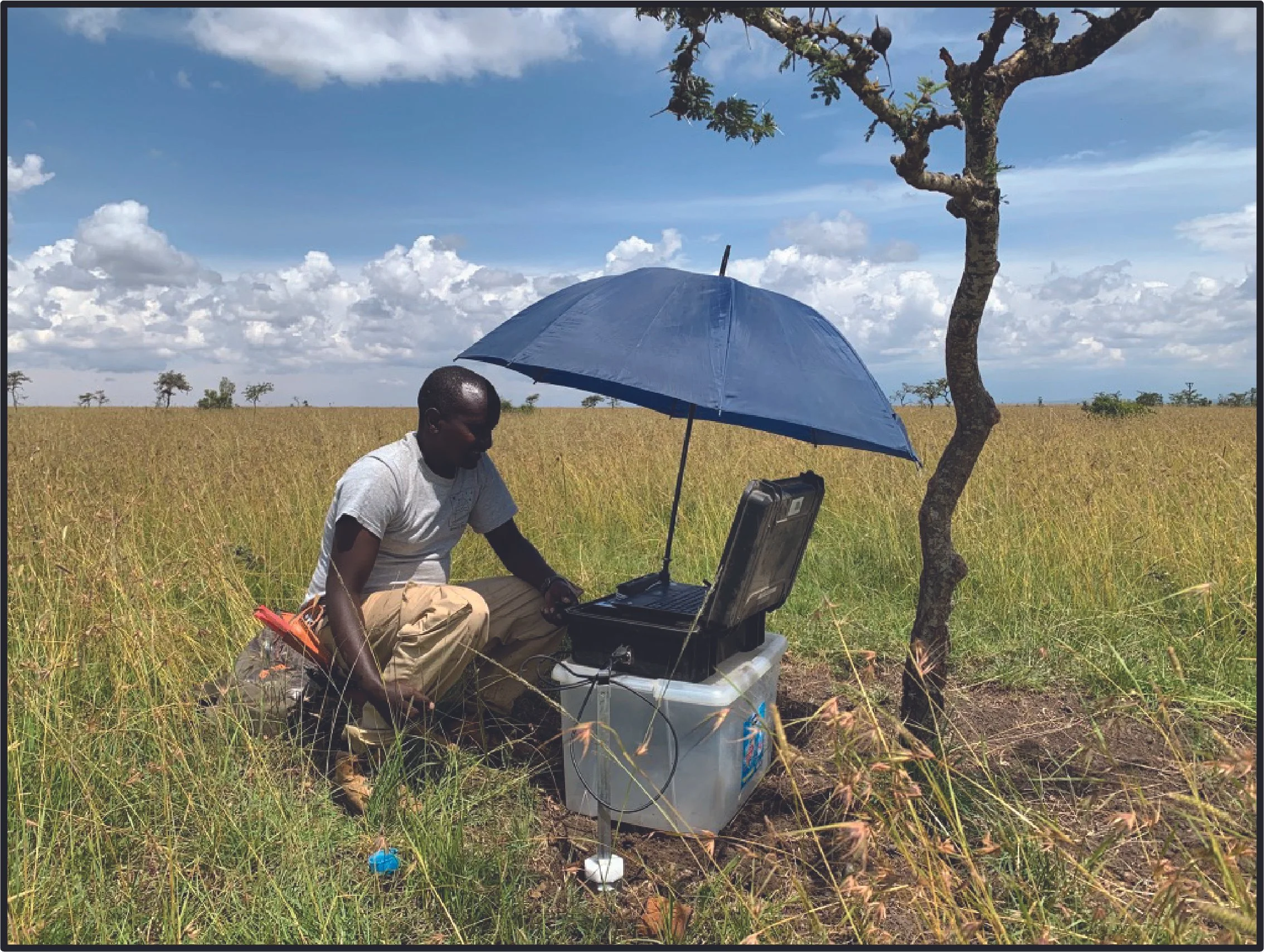New paper addresses the impacts of mutualism and global change on fine roots
John Mosiany taking photos from the minirhizotrons
Complexity belowground revealed using minirhizotrons
A long, long time ago, my friend Erol Akçay helped me model ant-plant mutualisms as an indirect exchange of carbon between ants and plants. Ever since that time, my lab has been working to add nuance to our understanding of what it means to consider ant defensive mutualists as a plant carbon sink. Our efforts took a big leap forward recently, as we began successfully characterizing fine root area of Kenyan acacias using minirhizotrons in the field. The new paper describing our first results from these experiments, led by Dr. Patrick Milligan during his postdoctoral work in the lab, was just published in New Phytologist. We describe how ant defensive activity correlates positively with tree root area to a threshold, how this positive ant-root relationship is reduced when trees are protected from vertebrate herbivores inside fences, reducing the benefit of the ants, and how tree root responsiveness to rainfall is a key variable that is altered by stress from both herbivory and ground-nesting invasive ants. The paper will soon be featured in a fascinating Commentary by Marie Arnaud and colleagues, arguing that the next step is to integrate mutualisms with soil carbon research. I couldn’t agree more!
The publication of this research is also exciting to me because of the perseverance it required to get to this point. After Todd Palmer and I had identified our shared interest in investigating the carbon dynamics of mutualism in this acacia-ant system back in 2015, we struggled to get proposals funded because of legitimate logistical concerns from reviewers. Among other things, any field study using minirhizotrons is still rare, and it was even less clear that the acrylic tubes would work in the crazy shrink-swell vertisols where these acacias dwell. Eventually, the National Science Foundation graced me with an invitation to submit an EAGER proposal, graced us even further by deciding to fund it, and we were off to the races in the fall of 2019. Having piloted the design, ordered materials, and arranged intense shipping logistics among companies, the University, and Kenya, we set off for field work in February 2020. Less than three weeks into our expedition, we were called back by the University because of COVID-19. The drill we planned to use to install the tubes and the shipment of tubes were still on their way to Nairobi. It was very depressing. Yet, somehow, we were able to get a car to transport the materials once they arrived from Nairobi to Mpala Research Centre, and they waited there. In the meantime, we were able to do some exciting work on acacia coarse roots with our Kenyan collaborators, John Mosiany and John Lemboi.
Flash forward another year, and Patrick was able to return to Kenya on his NSF PRFB. Patrick, John, and John masterfully engineered the installation of the minirhizotron tubes using the power drill as you can see below:
And, incredibly, the acrylic tubes did great in the vertisol soil, enabling repeat surveys in multiple seasons. The animals didn’t even disrupt them too much; only one tube was destroyed by baboons. Patrick resourcefully and skillfully navigated the many technical challenges that the minirhizotron camera threw his way. And we initiated a wonderful collaboration with Alina Zare’s lab at the University of Florida to analyze the images using deep learning.
The result is a paper that I think sheds a lot of light on the impact of aboveground mutualism on plant allocation and about how belowground investment links to plant strategy. With many thanks to all our collaborators and many congratulations to Patrick, its fearless leader!
“To understand positive associations that reinforce plant-insect mutualisms, we need field experiments that connect mutualist cost to whole-plant host benefit, as well as examinations of how such connections respond to global change.”

